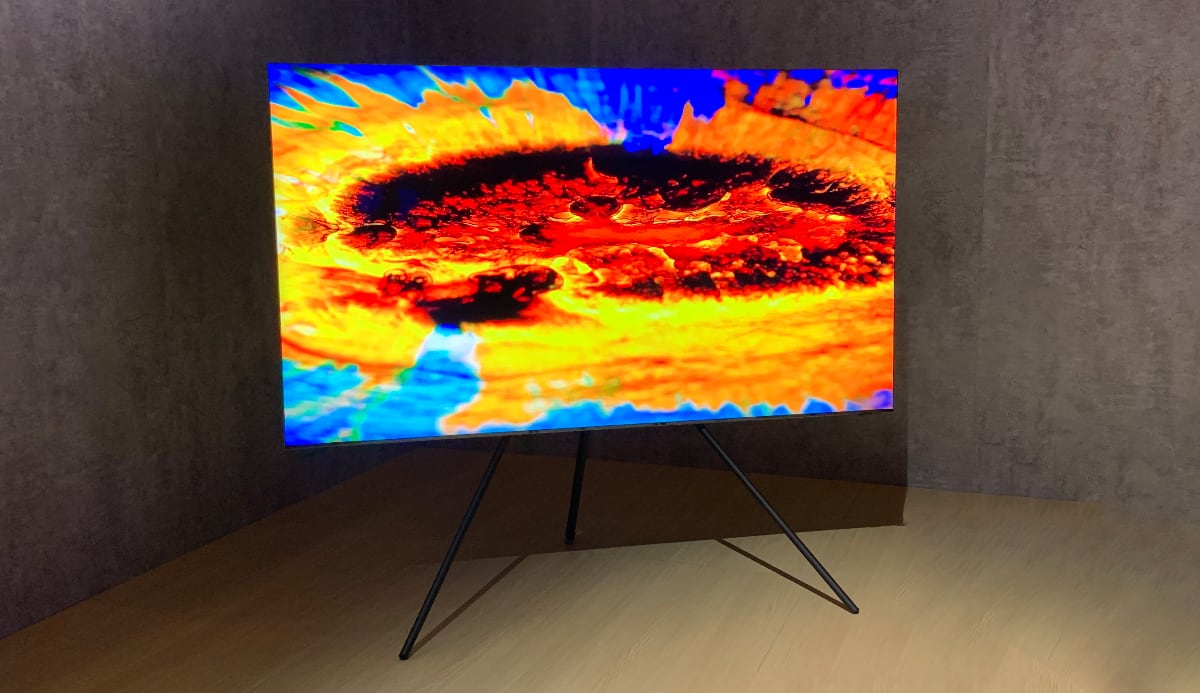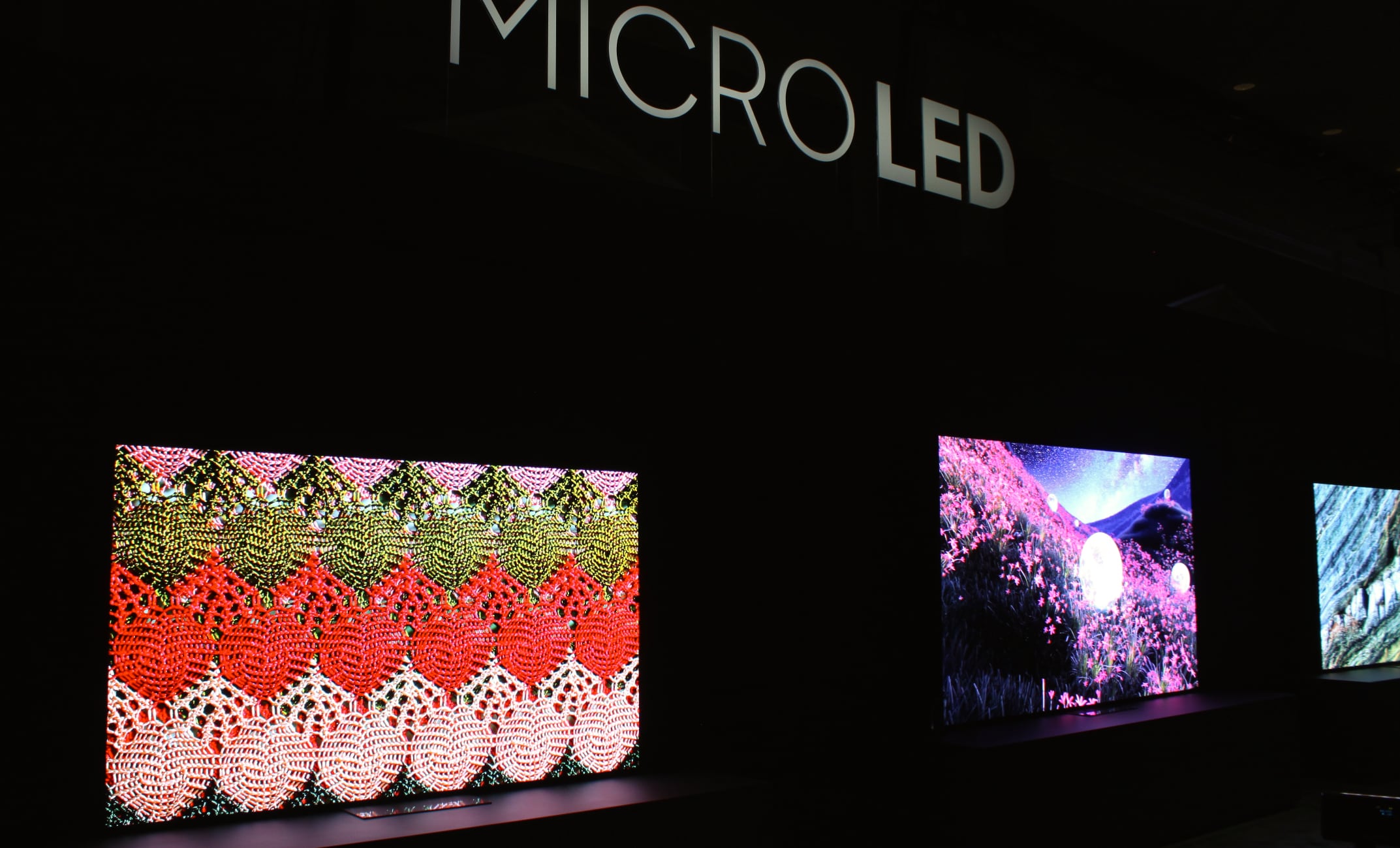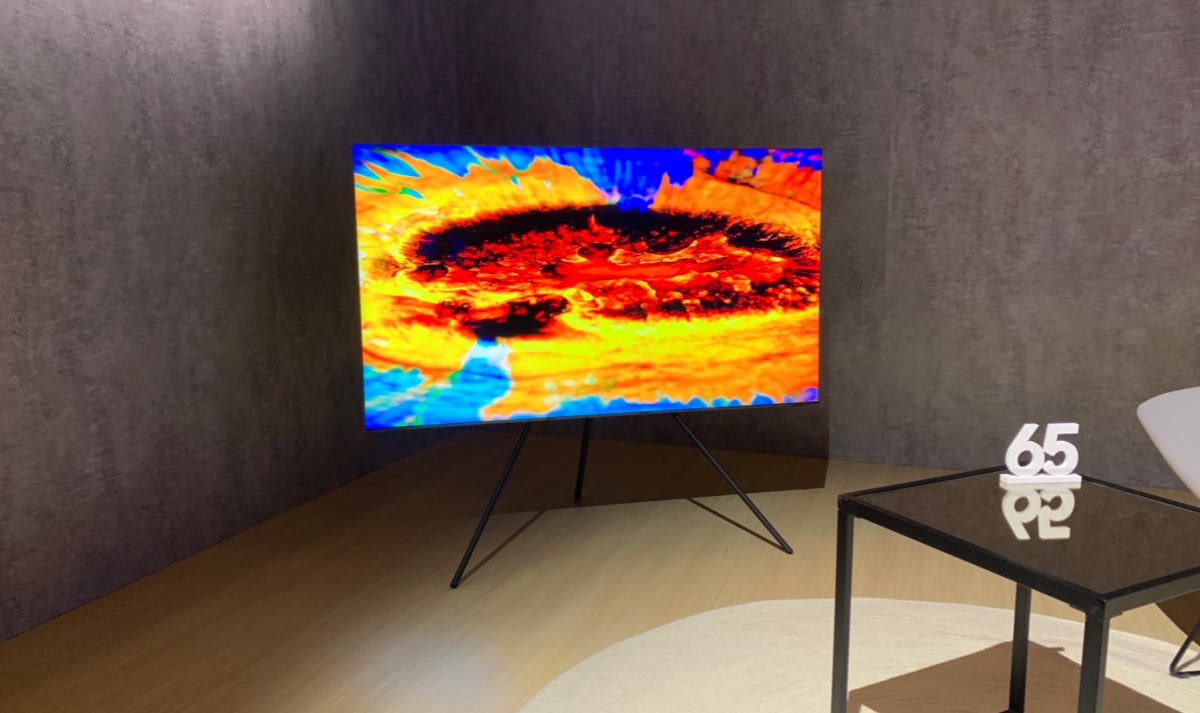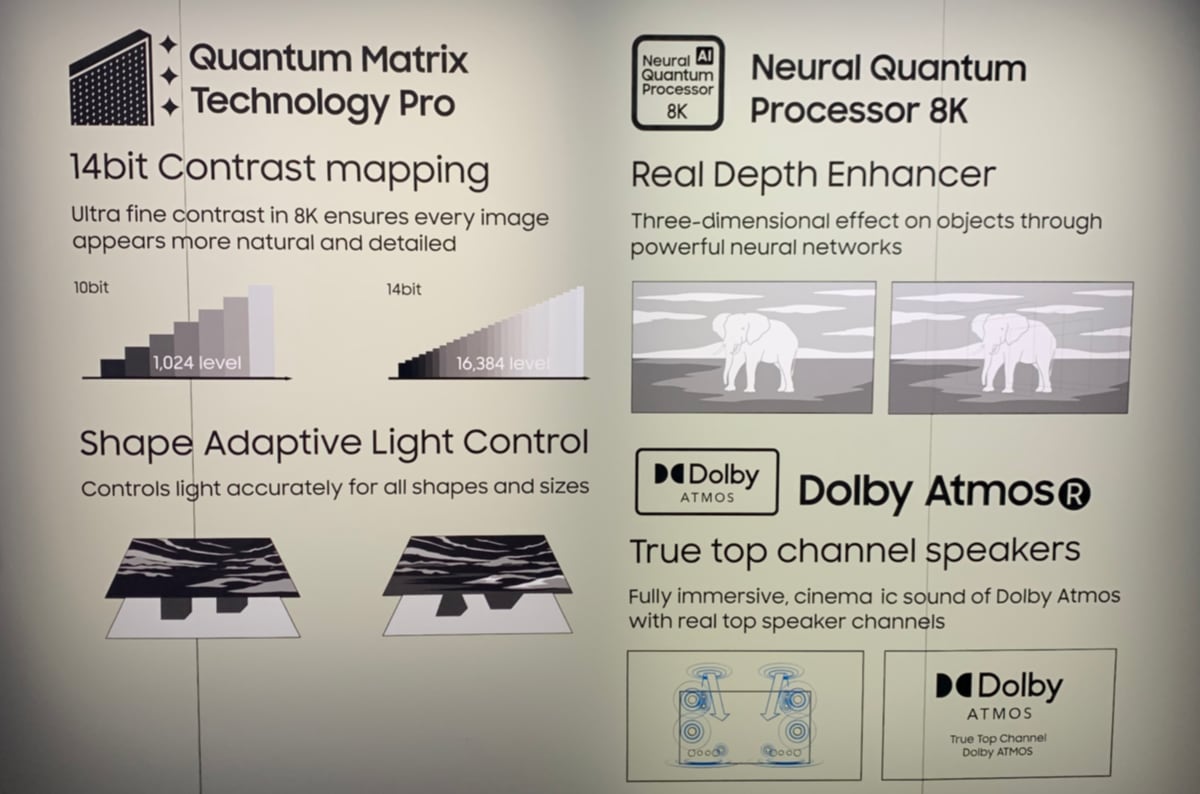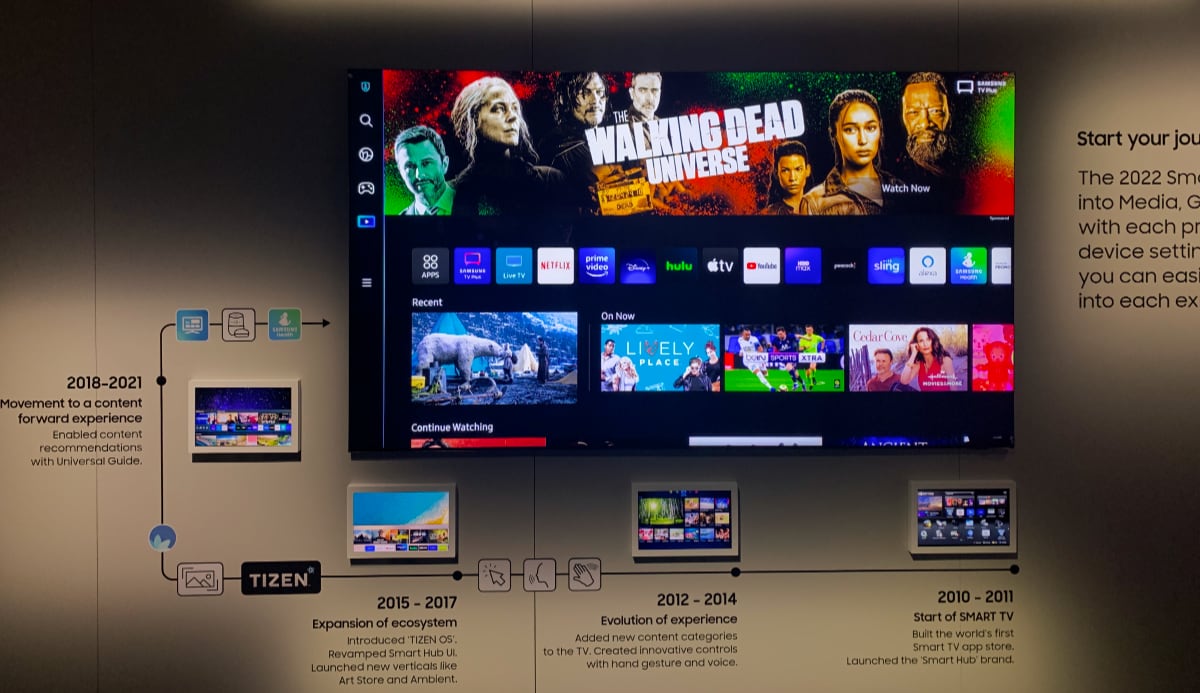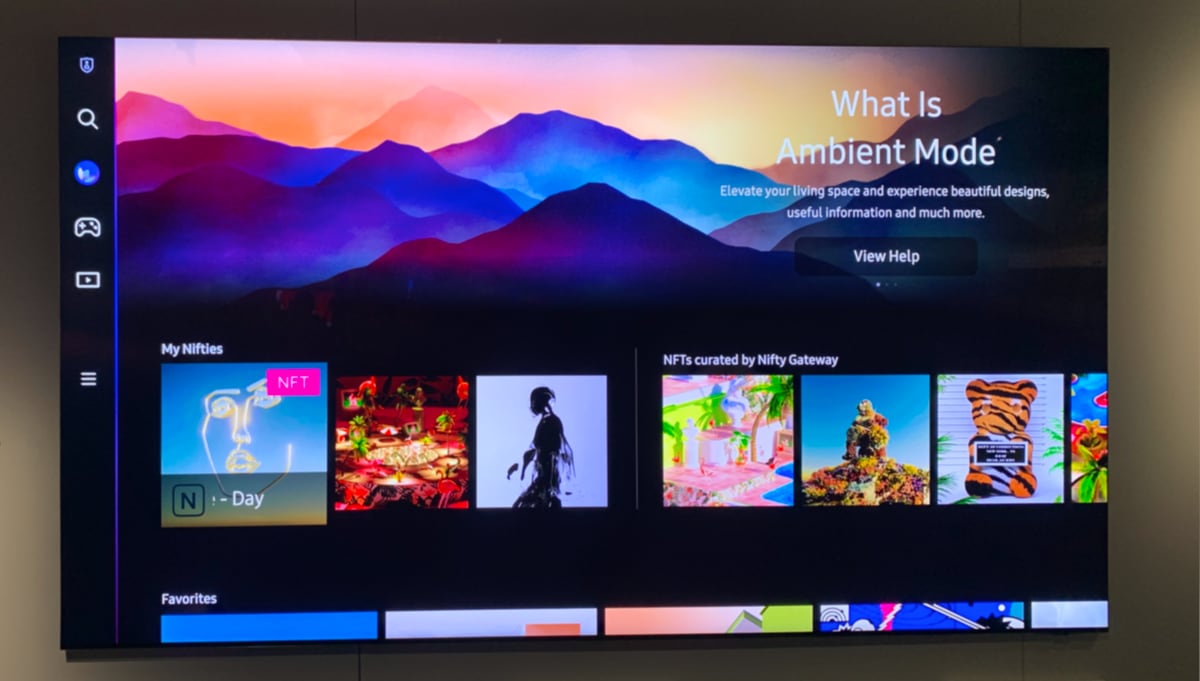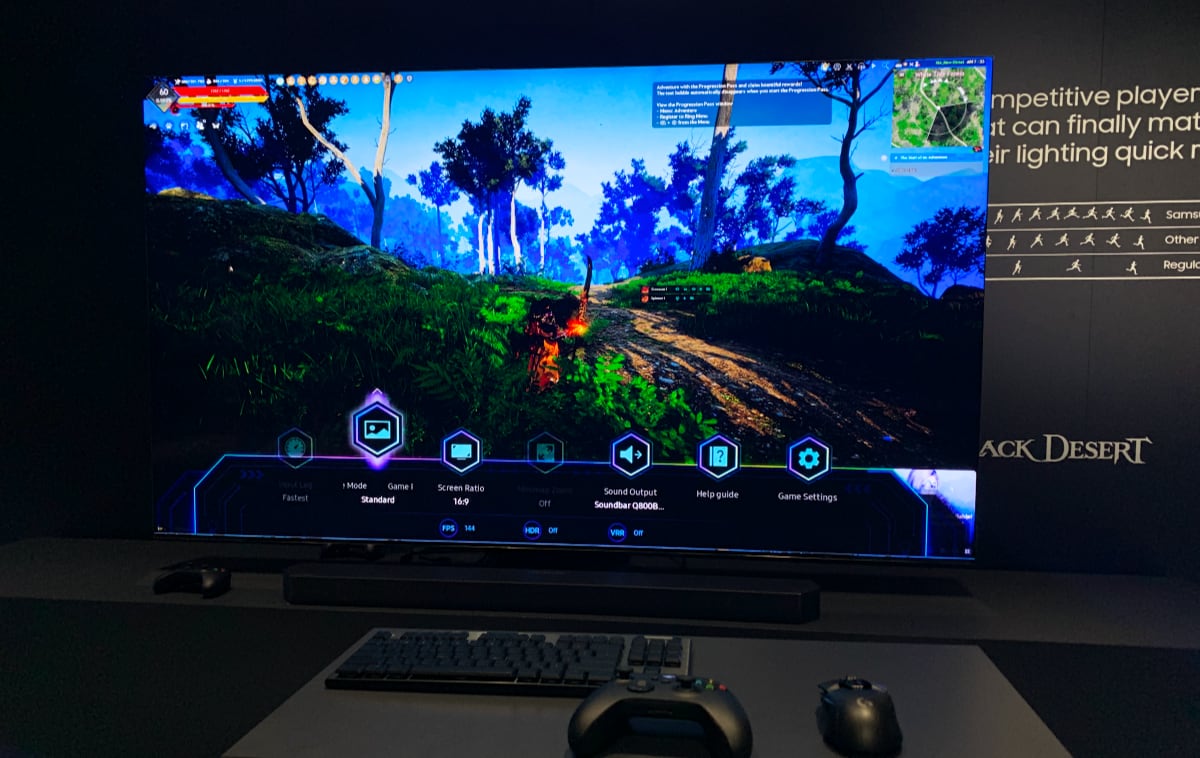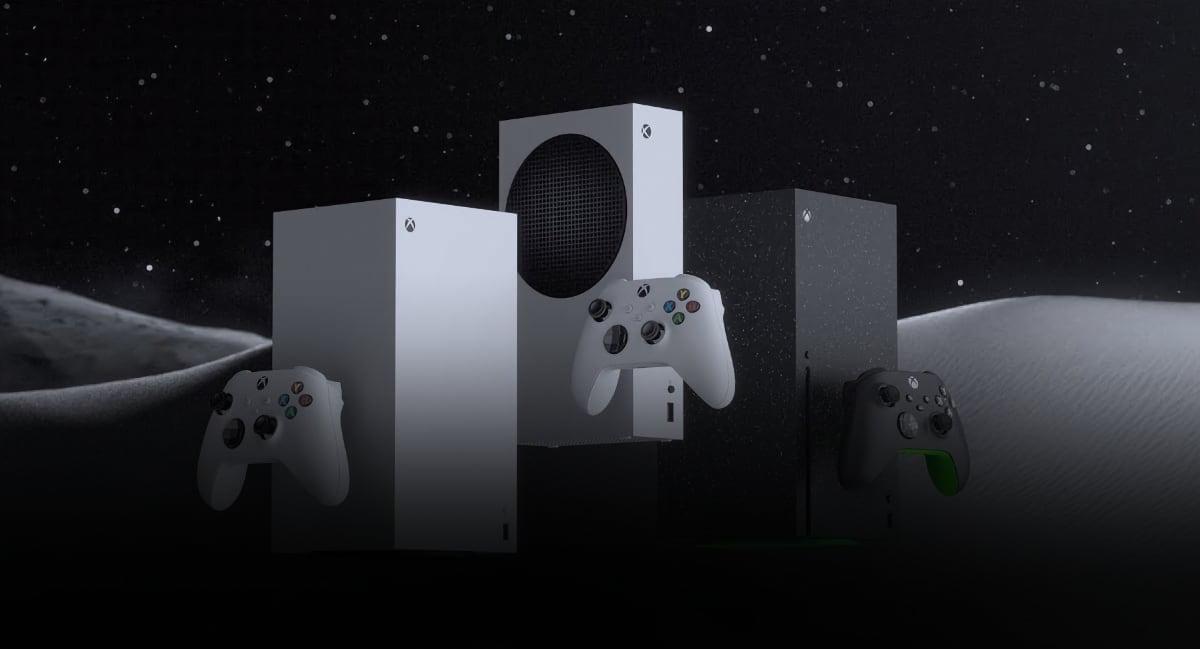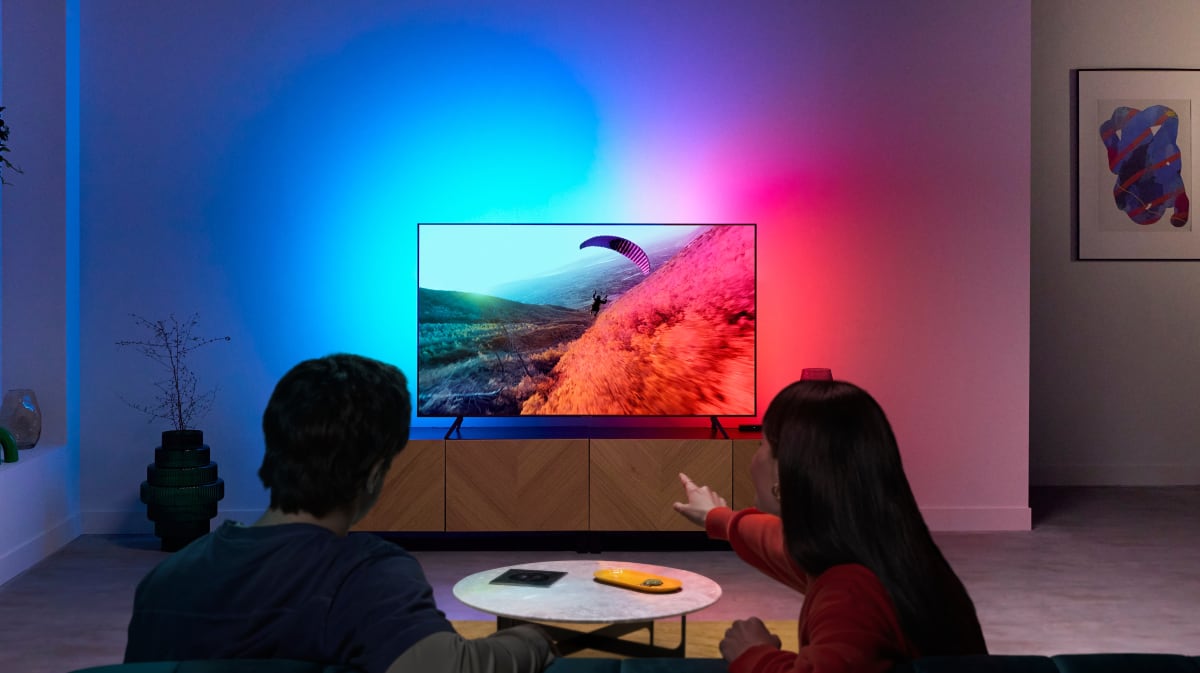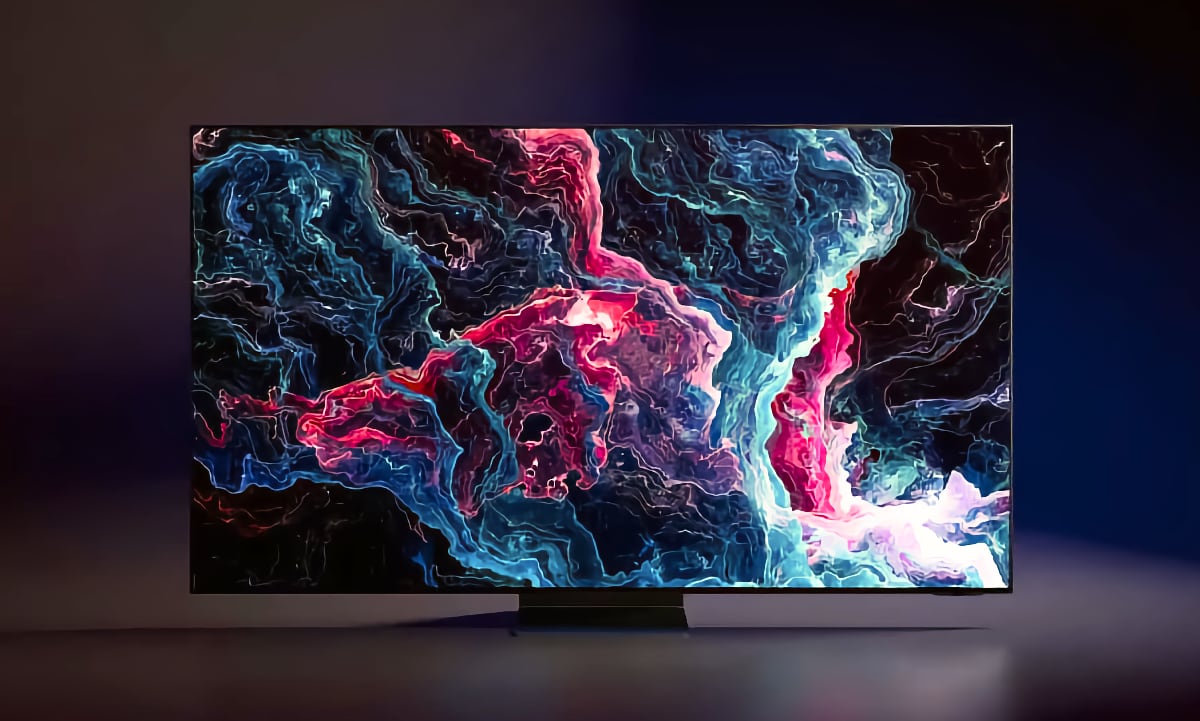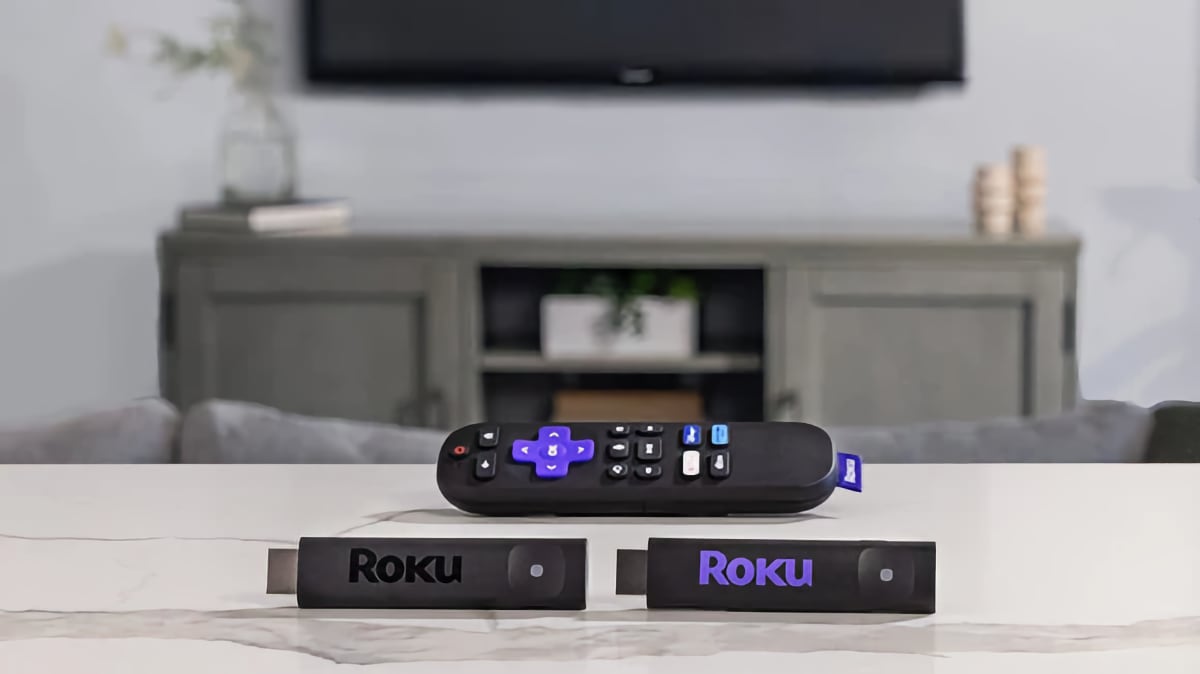Hands-on with Samsung's 2022 TVs (& technical information)
FlatpanelsHD has seen Samsung's 2022 "Neo QLED" LCD TVs, lifestyle TVs, microLED TVs, and even the company's secret QD-OLED TV. Here are our hands-on impressions.Samsung in 2022
In 2022, Samsung will expand its TV line-up to include the first QD-OLED TVs and more microLED TVs. We expect both categories to be expensive but QD-OLED TVs much less so than microLED TVs which will still be reserved for the 0.001%. It is a strong and perhaps the most comprehensive TV line-up of any brand. Samsung seems to have something for everyone, even buyers with Vertical Video Syndrome and interests in crypto. Also read: Samsung's new 89-114" microLED TVs will remain prohibitively expensive in 2022 MicroLED TVs will for the first time come in smaller 89- and 101-inch 4K models in addition to a 114-inch successor to last year's 110-inch version. They still look stunning with 100% DCI-P3 colors (Rec.2020 coverage was not quoted for the new models), pixel-level luminance and color control, and a 99.99% screen-to-body ratio. However, very few of us can afford the world's first LED TVs – the first new TV display technology in a decade – and there is not much new to add after our first look at the 110-inch microLED TV.89- to 110-inch Samsung MicroLED TVs. Photo: FlatpanelsHDSamsung has refreshed its line-up of 'lifestyle TVs', meaning The Frame, The Serif and The Sero – the current version of The Terrace will carry over into 2022. These three will for the first time come with a matte LCD panel to make digital art look more like paintings on a canvas. It looks good for this use case but it also makes pictures look duller, lacking in contrast and vibrancy, and it is not a display we would pick for watching movies and series or playing games. Samsung's lifestyle TVs are not displays for picture enthusiasts. Samsung is trying to cater to other segments – and they appear to do so with success – including art lovers who can soon buy NFT-based artwork from the new NFT hub that will be available as part of the revamp of the Tizen operating system – more on that in a minute. The "Neo QLED" LCD TVs will once again be available with 8K and 4K resolution in a range of sizes and models like QN900B, QN800B, QN95B, QN90B, and QN80B. There are a couple of picture-related developments that we will cover in a moment. The big news in 2022 in terms of new features is Dolby Atmos decoding support (including wireless Dolby Atmos to soundbars). Samsung has also redesigned the Tizen homescreen and added 144Hz panels (in high-end models). There is still no support for Dolby Vision HDR.Samsung 2022 "Neo QLED" LCD TV. Floor stand is optional. Photo: FlatpanelsHDHands on with 2022 "Neo QLED" LCD
Samsung is finally launching next-generation TVs in 2022 with QD-OLED and microLED but LCD models still make up the majority of the line-up. The high-end models will again be known "Neo QLED", which is a made-up marketing term. Behind the LCD panel there is a miniLED backlight, typically with local dimming capabilities. Samsung informed FlatpanelsHD that the number of dimming zones and brightness capabilities in both the 2022 8K and 4K "Neo QLED" LCD models will be more or less the same as in the 2021 models across the range. The external One Connect box will be included with the 4K QN95B and up. New for 2022 is:
New video and audio features in 2022 Samsung TVs. Photo: FlatpanelsHD
We saw the combination of the three video/backlight systems demonstrated in a 2022 QN900B versus a 2021 QN900A and while it seemed to improve luminance control the TVs really seemed to be more alike than different overall. There were a few situations where the 2022 model appeared to reach higher peak brightness in small segments of the picture and some situations where it seemed to resolve more details in highlights and shadow, but nothing groundbreaking.
We were not allowed to take photos during these sessions.
In another demonstration Samsung compared its 2022 "Neo QLED" to a reference studio monitor and an IPS LCD TV. Samsung's "Neo QLED", which is a VA LCD, is significantly better than the IPS LCD TV, which hardly comes as a surprise to avid readers, but it did not come close to matching the reference monitor.
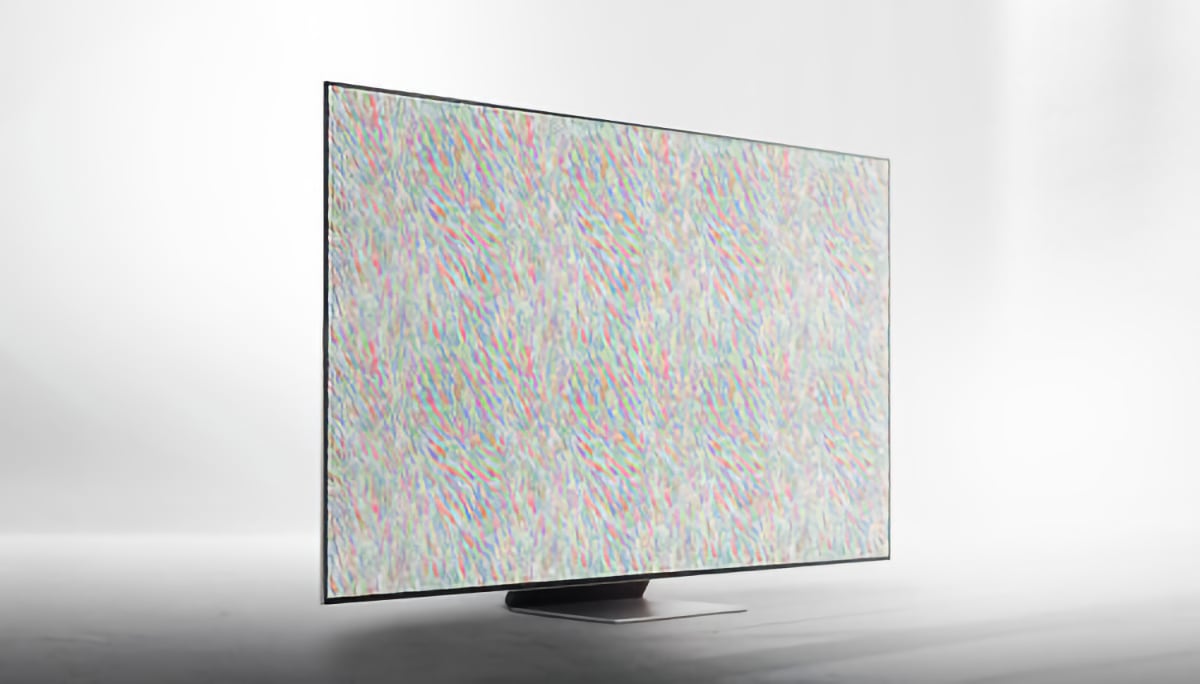
First picture of Samsung's QD-OLED TV
The Tizen homescreen goes full-screen in 2022. This is the Media section. Photo: FlatpanelsHD
Full-screen Tizen and new Gaming Hub
Samsung has revamped the Tizen homescreen in its 2022 TVs and it is now a full-screen user interface divided into three sections: Media, Game (Gaming Hub) and Ambient. The Media hub provides access to streaming services and content. The Gaming Hub aggregates everything related to gaming and it is where you will find the new Google Stadia and Nvidia GeForce Now game streaming apps. The Ambient section is where you will find Ambient mode, digital art, and the new NFT-based art hub. Watch the video from CES 2022 below to learn more about Samsung's new Gaming Hub. Samsung has not announced plans to bring the revamped version of Tizen to previous models and it is not clear either if the Google Stadia and Nvidia GeForce Now apps will be made available for 2021 and previous Samsung Smart TVs. The Ambient tab of the new Tizen homescreen. Photo: FlatpanelsHD
New gaming features, 144Hz
In addition to the new Gaming Hub introduced in the video in the previous section, Samsung highlighted three other new gaming features for 2022. These are: Gaming in 144Hz on a 2022 Samsung TV. Photo: FlatpanelsHD
HDR10+ Gaming, which encompasses 120Hz VRR, automated HDR calibration and 'Low Latency Source Tone Mappings', has only been confirmed for Samsung TVs and Nvidia GPUs (RTX 30 Series, RTX 20 Series and GTX 16 Series through driver updates in 2022). Panasonic is another founding member of the HDR10+ alliance but has not yet announced plans to support it. HDR10+ Gaming can be seen as an alternative to Dolby Vision gaming.
More general and technical information about HDR10+ Gaming can be found here and here.
Samsung added that HDR10+ Gaming will work with both 4K and 8K. It is not using dynamic metadata with gaming but is instead setting the tone-mapping at the beginning of the game. This will work with local gaming, pending an update for Nvidia GPUs. The GPU will ask the TV about its picture parameters and then adjust its tone-mapping parameters.
We pressed Samsung for more information on plans and adoption of HDR10+ Gaming but Samsung would only concede that it is in discussions with console makers. There is nothing to announce on this front regarding HDR10+.
HDR10+ Gaming ties into another focus area for Samsung, which is to improve cloud gaming on TVs. In 2022, Samsung has upgraded video decoding in its TVs to get below 100ms latency for cloud games. The company said that it has also optimized memory latency for cloud gaming. In one demo Samsung compared a 2022 model to a "conventional gaming TV" and the difference in latency was significant. Samsung 2022 TVs can also apply "AI" upscaling to cloud gaming to make up for the highly compressed video streams from the game servers. In one demo "AI" upscaling did add additional detail in trees and grass but it also looked a little too artificial. The upscaling model can differentiate between game types, said Samsung.
Cloud gaming is promising but there is still a lot of work to do in this area. It is great to see Samsung push forward but it is an industry task to make cloud gaming work seamlessly, and it will probably require everything from new codecs (plus new hardware) to new ways of designing servers to seamlessly scale performance – a faster and better internet infrastructure too.
There is lots of exciting stuff coming from Samsung in 2022 and we look forward to learning more and receive samples for in-depth testing. Ohh, did we mention that QD-OLED is glorious?

